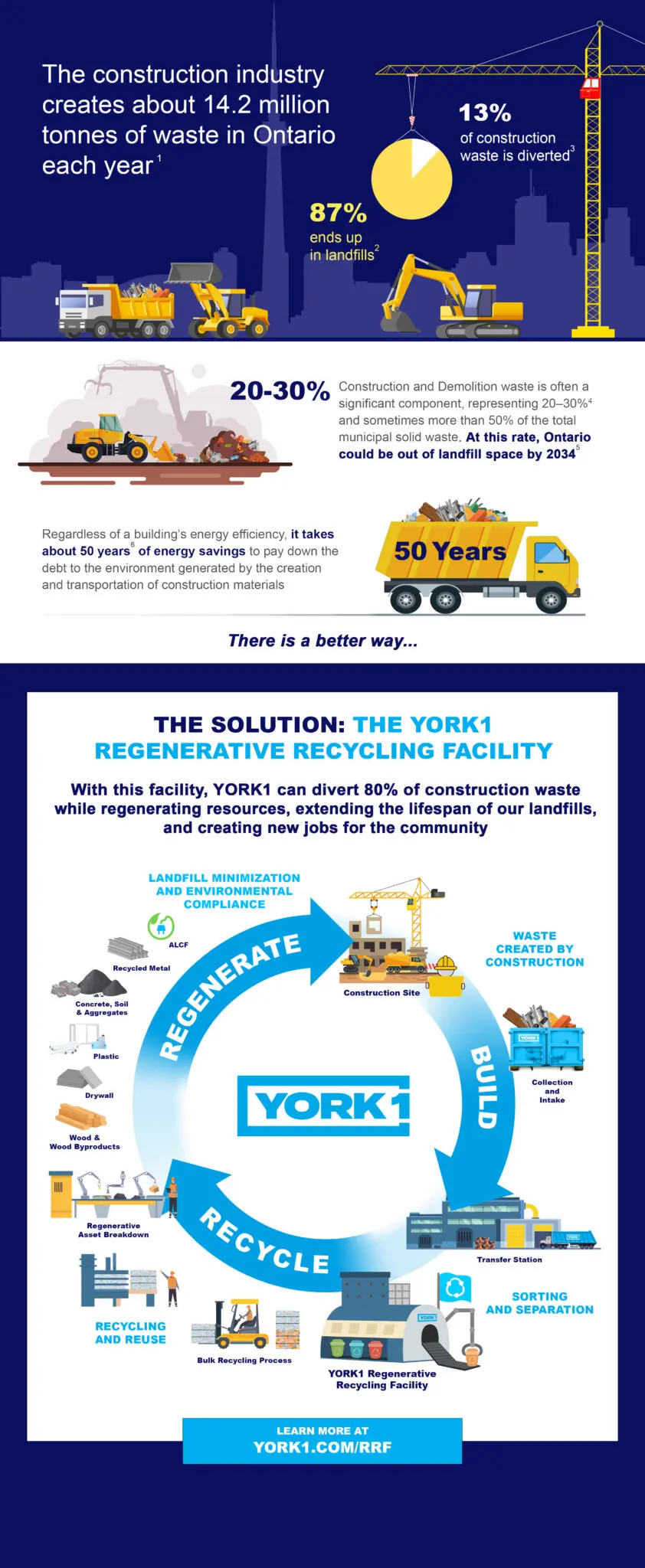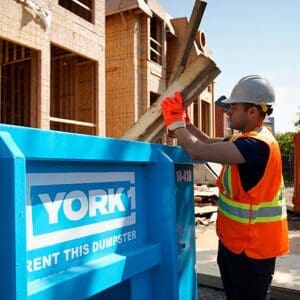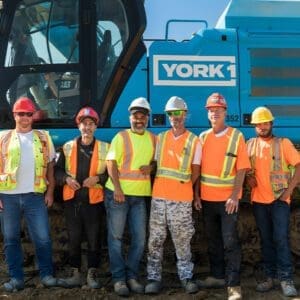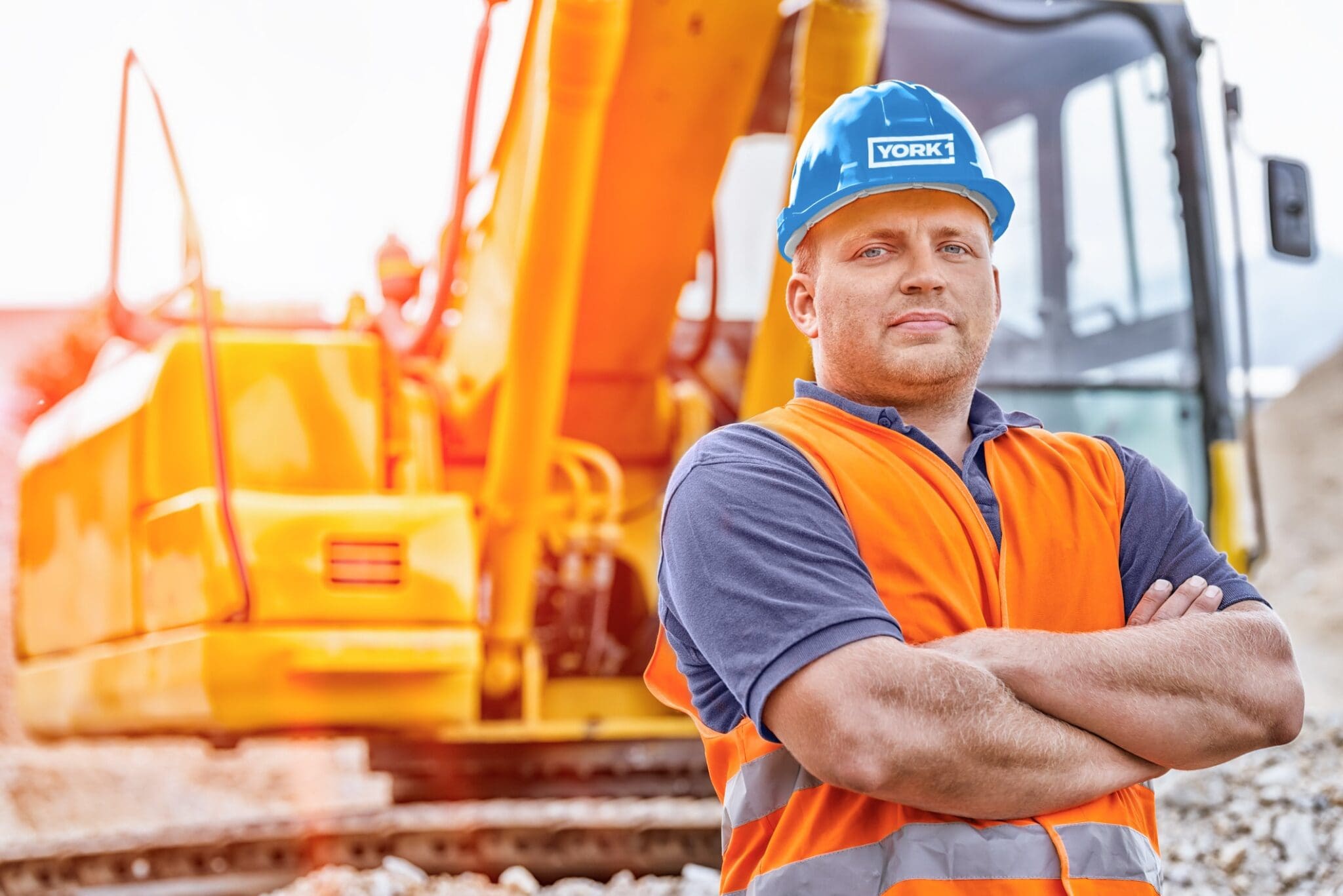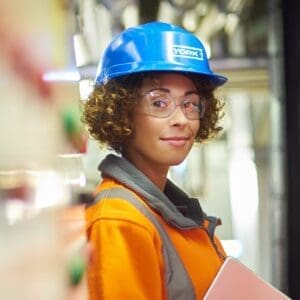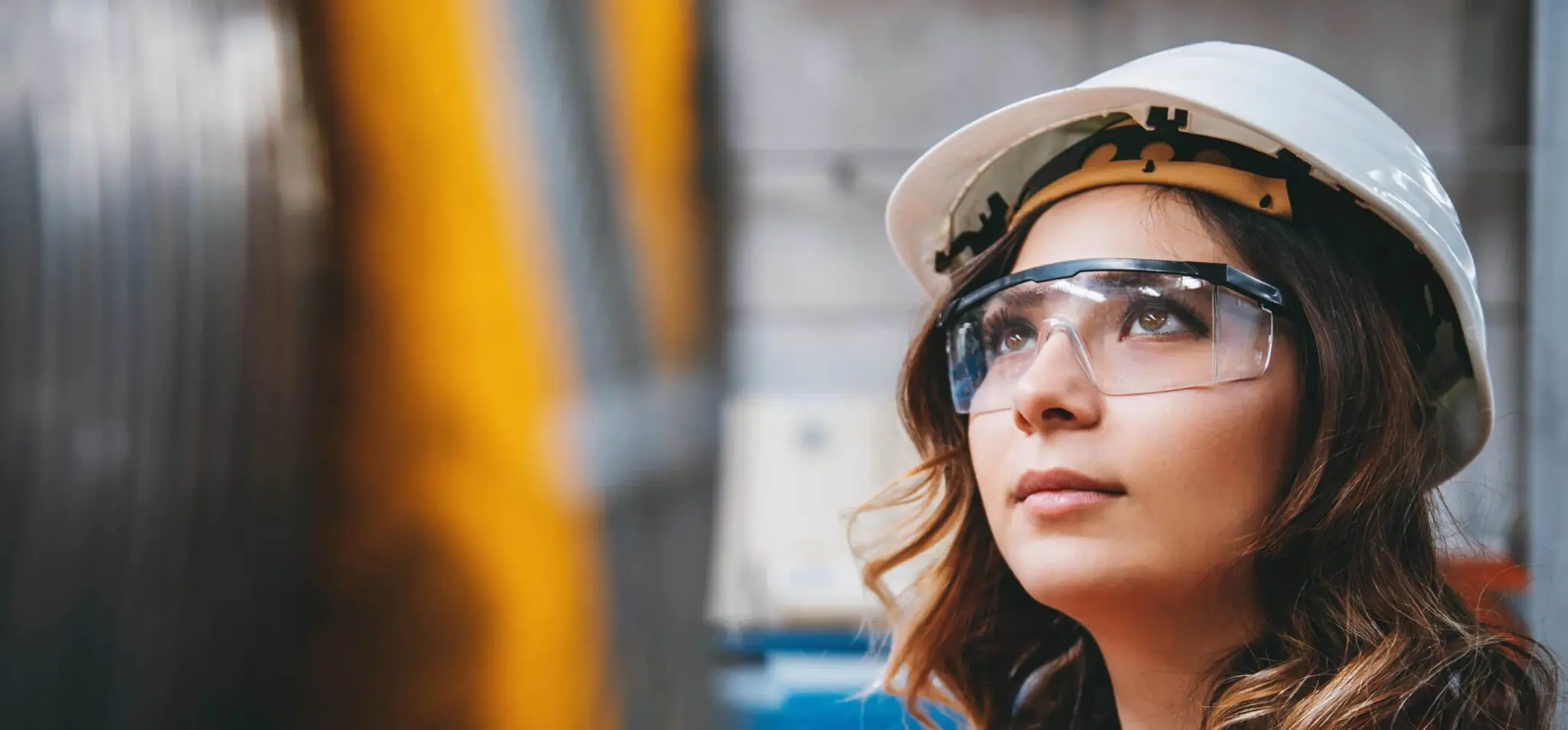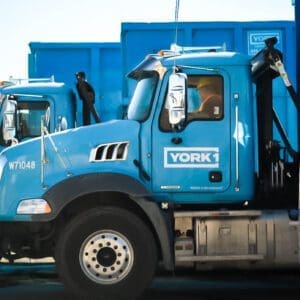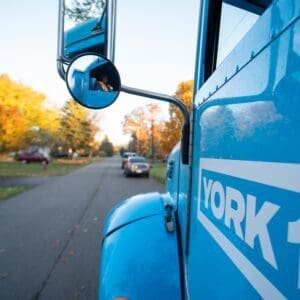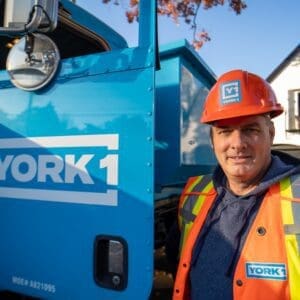Introducing Regenerative Recycling Facility
About the Project
Ontario's construction industry generates 14.2 million tonnes of waste annually, but only 13% of this waste is diverted from landfills. At our current rate, Ontario could run out of landfill space by 2034. Construction Material Waste is the focus of our facility and an area where significant progress can be made.
Currently, any marginal sorting of construction materials that takes place is done on job sites, or at waste transfer stations, where space constraints hinder the process.
Unlike traditional landfills that simply bury waste, the Regenerative Recycling Facility will focus on recovering valuable resources for recycling and reuse. The facility targets the recovery and beneficial re-use of 80% of the construction waste that would have otherwise gone to landfill, helping the environment and conserving valuable materials. By recovering resources from waste, the facility will contribute to environmental conservation, reduce the strain on landfills, and promote a more circular and resource-efficient economy.
That means a greener and more sustainable future for Ontario.
HOW IT WORKS
YORK1 Regenerative Recycling Facility operates through a systematic and technologically advanced process aimed at optimizing the extraction of value from waste materials.
Collection and Intake: Various types of waste, including recyclables, construction waste, and some otherwise non-recyclable materials, are collected from construction sites, and other sources and brought to a YORK1 Transfer Station. From there, after a preliminary sort, the material is sent to our Regenerative Recycling Facility.
Sorting and Separation: The waste is sorted and separated upon arrival using advanced machinery and manual labour. Recyclable materials like wood, gypsum, plastics, paper, glass, and metals are sorted for further processing.
Recycling and Reuse: Recyclable materials are processed and prepared for recycling. These materials can then be transformed into new products.
Landfill Minimization: By recovering valuable resources and converting waste into energy, a Regenerative Recycling Facility significantly reduces the amount of waste that needs to end up in the landfill.
Environmental Compliance: Resource recovery facilities adhere to strict environmental regulations and practices to ensure that the operations have a minimal negative impact on the environment and public health.
UPCOMING EVENTS
We will be hosting two community information sessions about the YORK1 Regenerative Recycling Facility. We invite you to attend one of these two events to learn more about the project. During both events, our team will address your questions and concerns about the facility.
Please see event details below and note that the venue has changed for the February 10th event.
First Event (limited capacity, immediate local neighbours prioritized):
- Saturday, February 10th at 1:00pm
- Location: The Wheelhouse, 547 North Street (new venue)
- *Immediate Local Neighbours (within 500m) given priority. Seating will be limited to 100 people. If space remains, we will be able to admit other community residents. Admission will be on a first-come, first-served basis.
Second Event (300-person capacity community event):
- Friday, March 1st at 6:00pm
- Location: Ken Houston Memorial Agricultural Centre, 1212 North Street
- For Dresden Community Members: Seating will be limited to 300 people and admission will be on a first-come, first served basis.
Community and Environment First
The Regenerative Recycling Facilities (RRFs) will be meticulously designed and operated to ensure minimal impact on local residents and the surrounding environment. Our plans call for the full remediation of the existing facility along Irish School Road, including the introduction of engineered cells to house all existing landfill. The facility will be primarily focused on construction materials and will not accept hazardous materials. Stringent measures, including advanced technologies and strict adherence to regulations, will mitigate any concerns around odours and contaminations.
YORK1 is committed to building a long-lasting presence in Chatham-Kent. Not only will our new facility generate employment opportunities, it also affords us an opportunity to actively engage with the community through educational programs and outreach efforts, as well as community partnerships, local events, and charitable contributions.
Sign up to our mailing list to receive information on future engagement opportunities with the YORK1 Regenerative Recycling Facility team.
Frequently Asked Questions
The Regenerative Recycling Facility is a specialized facility designed to manage waste materials efficiently and sustainably by extracting valuable resources for reuse, recycling, or conversion into energy in the form of alternative low carbon fuel (ALCF). This facility employs advanced technologies to sort, separate, and process various types of waste, including recyclables, construction waste, and inert fill. By recovering resources from waste, the facility will contribute to environmental conservation, reduce the strain on landfills, and promote a more circular and resource-efficient economy.
Unlike traditional landfills that simply bury waste, the Regenerative Recycling Facility focuses on recovering valuable resources for recycling and reuse. The facility targets the recovery and beneficial re-use of 80% of the construction waste that would have otherwise gone to landfill, helping the environment and conserving valuable materials.
The Regenerative Recycling Facility operates through a systematic and technologically advanced process aimed at optimizing the extraction of value from waste materials. Here's how it works:
Collection and Intake: Various types of waste, including recyclables, construction waste, and some otherwise non-recyclable materials, are collected from construction sites, and other sources and brought to a YORK1 Transfer Station. From there, after a preliminary sort, the material is sent to our Regenerative Recycling Facility.
Sorting and Separation: The waste is sorted and separated upon arrival using advanced machinery and manual labour. Recyclable materials like wood, gypsum, plastics, paper, glass, and metals are sorted for further processing.
Recycling and Reuse: Recyclable materials are processed and prepared for recycling. Plastics and wood may be shredded or melted down, paper and cardboard are pulped, and metals are compacted. These materials can then be transformed into new products.
Landfill Minimization: By recovering valuable resources and converting waste into energy, a Regenerative Recycling Facility significantly reduces the amount of waste that needs to be sent to landfills.
Environmental Compliance: Resource recovery facilities adhere to strict environmental regulations and practices to ensure that the operations have a minimal negative impact on the environment and public health.
Community Engagement: We will engage with the local community through educational programs, tours, and outreach efforts to raise awareness about recycling, waste reduction, and sustainable practices.
Overall, the Regenerative Recycling Facility's innovative approach contributes to environmental sustainability by reducing landfill waste, conserving resources, minimizing greenhouse gas emissions, and promoting the circular economy.
A wide range of materials can be recycled at the YORK1 Regenerative Recycling Facility, contributing to environmental sustainability and resource conservation.
These materials typically include:
- Wood (including painted, MDF, and treated)
- Clay Brick
- Concrete
- Sand
- Gypsum
- Rubber
- Insulation
- Paper and Cardboard
- Plastics
- Glass
- Metals
- Electronics
- Textiles
- Aggregate Soil
The materials we handle are non-putrescible, meaning they produce little to no odour. As an example: we focus on wood and aggregate processing. Instead of allowing wood, bricks, concrete, asphalt, and stone to end up in landfills, we transform them into re-useable materials such as granular B, gravel, and landscape material. Imagine the bags of mulch and stone you find at your local hardware store—these could potentially come from our facility in the future. Additionally, a majority of sorting, recycling and transferring activities will occur within a covered building, further ensuring no on-site odour issues.
Once materials are sorted at a Regenerative Recycling Facility (RRF), they undergo various processes that contribute to recycling, resource recovery, and responsible waste management:
Biomass will be separated for the creation of alternative low carbon fuels
Recycling: Recyclable materials like paper, cardboard, glass, plastics, and metals are further processed and prepared for recycling. They may be baled, shredded, or otherwise prepared for transportation to end-use facilities where they are turned into new products.
Landfill Disposal (Residual Waste): Any remaining waste that cannot be recycled, composted, reused, or converted into energy may be safely disposed of in accordance with regulations at a landfill. However, YORK1's RRF aims to minimize the amount of waste deposited at landfill.
Resource Recovery: Valuable resources, such as metals, plastics, and other materials recovered during sorting are either sent to recycling facilities for further processing or used within the RRF's own operations if applicable.
Overall, the processes following material sorting at a Regenerative Recycling Facility aim to maximize the recovery of valuable resources, minimize waste sent to landfills, and contribute to a more sustainable and circular approach to waste management.
Yes, individuals are allowed to drop off their recyclables for proper processing and disposal. This drop-off option provides an accessible and convenient way for residents and businesses to contribute to recycling efforts and responsible waste management. Individuals can bring various types of recyclable materials, such as paper, cardboard, plastics, glass, and metals to YORK1's Regenerative Recycling Facility.
YORK1 Regenerative Recycling Facility plays a pivotal role in significantly reducing waste and conserving valuable resources, contributing to both environmental sustainability and efficient waste management. Through its advanced processes and capabilities, a Regenerative Recycling Facility effectively addresses various waste-related challenges in several ways:
Streamlined Waste Handling: Resource recovery facilities eliminate the need for sending multiple trucks to sites to collect source-separated materials. This streamlines waste-handling processes and reduces the logistical complexities associated with collecting and transporting different types of waste.
Reinvestment Toward Local Economy: Through the consolidation of waste processing and recovery operations within a single facility, resource recovery centres eliminate the necessity to transport materials to various recovery sites. This centralization not only enhances operational efficiency and diminishes transportation-related effects but also strategically channels resources towards local economy reinvestment instead of outward diversion to other nations.
Reduced Long-Haul Transportation: Resource recovery facilities help reduce the extensive transportation of waste over long distances to landfills, which are often located far away. By diverting waste to a local Ontario-based facility, the need for long-haul trucks that contribute to greenhouse gas emissions is minimized.
Greenhouse Gas Emission Reduction: These facilities significantly reduce greenhouse gas emissions by diverting more than 80% of waste material from ending up in landfills. Instead, the recovered resources, such as energy and materials, are reintroduced into the economy. This approach mitigates the environmental impact of waste disposal and contributes to a cleaner, more sustainable future.
Resource Conservation: Resource recovery facilities contribute to conserving valuable resources by efficiently extracting usable materials, energy, and alternative low-carbon fuels from waste streams. This resource conservation supports circular economy principles, where recovered materials are reintegrated into production processes, reducing the need for virgin resources.
Optimized Space Utilization: By reducing the demand on small waste transfers and job sites with limited space, resource recovery facilities alleviate the pressure on local waste management infrastructure. This frees up space for other essential activities and reduces the environmental footprint of waste management facilities.
Community and Economic Benefits: Resource recovery facilities create opportunities for job creation, technological innovation, and local economic growth. They contribute to a more sustainable waste management sector while promoting community well-being and development.
The community can support the RRF by engaging in community outreach programs and providing input early in the planning process. Work with YORK1 to create a future that will allow both the community and the facility to flourish together.
In Chatham-Kent, our commitment to supporting the local community through our Regenerative Recycling Facility (RRF) encompasses several key initiatives:
Job Creation: YORK1's Regenerative Recycling Facility will generate employment opportunities for local residents, ranging from skilled positions in facility operations and maintenance to administrative and support roles.
Education and Awareness: We will actively engage with the community through educational programs and outreach efforts. Workshops, tours, and informational sessions will promote sustainable practices, recycling awareness, and waste reduction strategies.
Community Partnerships: Collaborating with local schools, businesses, and organizations, we will develop partnerships that promote environmental consciousness, fostering a culture of responsible waste management and resource conservation.
Public Health and Environment: Our YORK1 RRF will uphold the highest environmental and safety standards. Through regular monitoring and compliance with regulations, we will ensure the well-being of the community and the preservation of Chatham-Kent's natural surroundings.
Infrastructure Enhancement: As part of our commitment to the community, we will invest in modern infrastructure and technologies that contribute to efficient waste management and resource recovery, aligning with Chatham-Kent's long-term sustainability goals.
Responsive Engagement: We will establish open lines of communication, actively listening to community feedback and concerns. Our commitment to transparency means that we will address any queries promptly and work collaboratively to find solutions.
Community Events: Organizing community events focused on recycling drives, clean-up initiatives, and sustainability workshops will foster a sense of pride and ownership among residents.
Local Economy: By emphasizing local procurement, we aim to contribute to Chatham-Kent's economy and strengthen the regional supply chain.
Supporting Local Causes: We are dedicated to actively participating in and supporting local initiatives, contributing positively to the social fabric and quality of life in Chatham-Kent.
Through these comprehensive efforts, our Regenerative Recycling Facility is poised to become an integral part of Chatham-Kent's community, creating a positive and lasting impact for residents and the environment alike.
The proposed RRF facility will have no negative impacts on your vegetable garden, livestock, soil, or groundwater. Modern engineered landfills are carefully designed to prevent contamination of groundwater. They are lined with impermeable engineered liners that have specialized leachate collection systems to ensure that any leachate (water captured in the landfill) that comes in contact with landfilled materials is collected and treated, similar to how sewage is managed. Additionally, our plan includes remediating the existing unlined landfill by digging up the previously buried material and placing it into the new engineered landfill cell. This approach is a significant environmental improvement and aims to improve the groundwater quality in your area.
To mitigate the issue of wind-blown litter at this facility, several measures are in place. These include perimeter berms, fencing, litter control, regular litter pickup, and conducting certain transfers indoors. The materials handled at this site primarily consist of construction and demolition debris, as well as soil and aggregate. The goal is to recycle, repurpose, and regenerate materials that would otherwise end up buried. As with all our material processing and recycling facilities, we are committed to maintaining a clean and tidy area. Our processes may include using sweepers, water trucks, dust suppression sprinklers, and wind screening, where required. Additionally, there are buffer zones on this specific facility to ensure our neighbors are not adversely affected.
